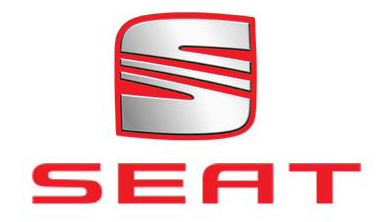SEAT Geared Up for the Challenges of Car Future
 |
Lower CO2 emissions, connectivity and safety are the challenges facing carmakers
SEAT Executive Vice-President for R&D, Dr. Matthias Rabe, underscores the key role played by the SEAT Technical Center in Spain’s automotive industry
This year SEAT is celebrating 40th anniversary of its Technical Center
Between 2006 and 2014, SEAT lowered its CO2 emissions by 21%
The company closed 2014 with more than 442,000 vehicles (+13.5%) produced in Martorell, the highest figure since 2002
SEAT will open more than 100 new dealerships in 2015
MADRID -- January 14, 2015: SEAT Executive Vice-President for R&D, Dr. Matthias Rabe, has outlined the challenges facing the automotive industry over the next few years at the second “Encuentros SEAT” forum held today in Madrid. Speaking to a group of business leaders, politicians and institutions under the heading “SEAT – vision of the future for the automotive industry”, Dr. Rabe identified three of the major priorities currently being dealt with by carmakers: “car connectivity, enhanced active and passive safety measures and reducing CO2 emissions”.
Dr. Rabe pointed out some of the achievements already made by SEAT in these areas. As an example, “between 2006 and 2014 SEAT lowered CO2 emissions by 21%, partly due to innovations such as engine optimisation, improved aerodynamics and by producing more lightweight vehicles”. He went on to say that the company already sells vehicles fuelled by compressed natural gas (Leon TGI and Mii Ecofuel – not sold in UK) and it possesses the technological know-how to promote electric vehicles as soon as market conditions are favourable. Dr. Rabe announced that SEAT will be featuring new developments in connectivity in upcoming models, and went over the new driver assistance safety systems. The entire range of SEAT vehicles currently has a five-star Euro NCAP rating.
The Executive Vice-President for R&D explained that these technologies are being developed at the SEAT Technical Center and stressed its role in promoting innovation in the automotive sector in Spain. SEAT designs and develops its cars in this facility, which is located at the Martorell factory site. The Technical Center, the only one of its kind in Spain and Southern Europe, is celebrating its 40th anniversary this year. “SEAT is the largest industrial investor in R&D in Spain and having these facilities makes us fully prepared to address the challenges of the car of the future”, assured Dr. Rabe. In the last five years, SEAT has invested more than 1,400 million euros in R&D.
SEAT will open more than 100 new dealerships in 2015 At the forum, SEAT Executive Committee President Jürgen Stackmann highlighted last year’s performance figures by announcing that the Martorell plant closed 2014 with a total of 442,677 vehicles produced, an increase of 13.5% (52, 629 vehicles) over 2013. This annual growth is the fifth in a row and the highest production volume in Martorell since 2002. Furthermore, the plant also produced more vehicles than any other in Spain in 2014. Stackmann underlined that, “thanks to the increase in production, last year we hired more than 800 temporary workers and since January, 350 of those workers have signed permanent contracts”. He went on to say: “We are looking forward to 2015 with optimism. We are going to open more than 100 dealerships, 90% of them in Europe, and our objective is to consolidate the sales growth of the last two years”.
Stackmann also stressed the importance of “an appealing and ambitious industrial policy that focuses on enhancing innovation, technology and training” and made claims for a “solid alliance among the Public Administrations, businesses and unions” to rise to the challenges in the automotive sector.
Also present at the round table was Miguel Sebastián, former Spanish minister for Industry, Tourism and Commerce, who contributed with his vision for the future of the automotive industry by pointing out the need for collaboration between the public and private sectors to ensure ongoing investments in innovation.


